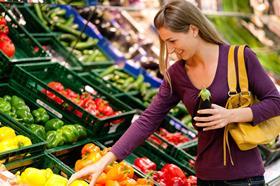
A recent report by the US Department of Agriculture reveals that more than 30 per cent of food available in the country at retail and consumer level goes uneaten, while the proportion of waste in fresh fruits and vegetables is even greater.
The study claims that with a 19 per cent share of total food loss, vegetables are the second largest source of food waste in the US after meat, poultry and fish, which together have a 30 per cent share of losses. Fresh fruit accounts for a further 13.9 per cent of total food waste.
In total, the study estimates that food loss at retail and consumer levels reached 133bn lbs in 2010, equivalent to 31 per cent of the 430bn lbs of total food avaiable. Retail losses are estimated to account for 10 per cent (43bn lbs) of the total food supply, while the USDA puts losses at consumer level at 21 per cent (90bn lbs).
In fresh fruit, losses at retail stood at 4.4bn lbs or 9 per cent of the total supply (37.6bn lbs) while losses at consumer level were 9.5bn lbs, or 25 per cent of total supply. Taken together, retail and consumer losses for fresh fruit were 13.9bn lbs or 37 per cent of total fresh fruit supply.
Total retail and consumer losses of fresh vegetables stood at 18bn lbs, or 34 per cent of the total fresh vegetable supply of 53.5bn lbs. Retail losses are pegged at 5.2bn lbs, or 10 per cent of the total fresh vegetable supply. Consumer-level losses were 12.8bn lbs, or 24 per cent of the total fresh vegetable supply.
While the report stressed that it is impossible for the US or any other country to eliminate food waste entirely, the researchers said it could be trimmed by industry-wide initiatives or government-led policies, such as
“In the end, economic incentives and consumer behaviour will be paramount in reducing food loss,” according to the report.



